Caryn
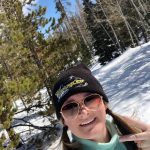
 Few things can be more frustrating when we have decided to get in shape, that to have the gym we joined closed down. These days, in the light of the Coronavirus, and it’s many closures, most people find themselves members of a closed gym…not because the gym went bankrupt, although that could happen if this goes on very long, but rather the gyms are closed for “social distancing” for an undetermined time, leaving most dedicated exercise enthusiasts in the lurch. My niece, Amanda Reed is one of those exercise enthusiasts, who joined the gym a while back, determined to get in shape, only to find herself in limbo.
Few things can be more frustrating when we have decided to get in shape, that to have the gym we joined closed down. These days, in the light of the Coronavirus, and it’s many closures, most people find themselves members of a closed gym…not because the gym went bankrupt, although that could happen if this goes on very long, but rather the gyms are closed for “social distancing” for an undetermined time, leaving most dedicated exercise enthusiasts in the lurch. My niece, Amanda Reed is one of those exercise enthusiasts, who joined the gym a while back, determined to get in shape, only to find herself in limbo.
Thankfully the gym is not the only way that Amanda likes to get her workout in. She has always been an outdoor girl, and even decided to hike up to the mountains where she, her family, and friends have spent many a winter day snowmobiling in the snow. The mountain; like the lake where Amanda and Sean have a mobile home so they can spend summer weekends there; is a place that draws Amanda. For years, she might not have been in the physical shape needed to hike the mountain, but now, that has changed, and she successfully made it to the top with her faithful dog. What a thrill that must have been. The snow was deep in some places, but she didn’t let that keep her from the prize she had set for herself. That is the kind of determination an athlete knows well…no matter how long they have waited to become an athlete. Nevertheless, someone who has worked out to prepare, and then hiked up a mountain, no matter how high or not high it is, has truly become an athlete, and can be proud of the accomplishment.
Amanda and her family are planning a trip to Lake Havasu City, Arizona. It may be part of the reason she 
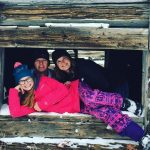 joined a gym, but then we all need a reason to get started, don’t we? Amanda works at the bank in Rawlins, and like many of us “social distancing” has her working from home part-time. I truly is a different world these days. Amanda…true to her lake-loving self, chose to spend her birthday at their place at the lake cleaning. Spring fever is upon her, and she is feeling the draw of the lake. She just loves it out there. Her partner, Sean is going to take her on a Razor ride over to Miracle Mile while they are out there. Sounds like a great way to spend her birthday weekend. Today is Amanda’s birthday. Happy birthday Amanda!! Have a great day!! We love you!!
joined a gym, but then we all need a reason to get started, don’t we? Amanda works at the bank in Rawlins, and like many of us “social distancing” has her working from home part-time. I truly is a different world these days. Amanda…true to her lake-loving self, chose to spend her birthday at their place at the lake cleaning. Spring fever is upon her, and she is feeling the draw of the lake. She just loves it out there. Her partner, Sean is going to take her on a Razor ride over to Miracle Mile while they are out there. Sounds like a great way to spend her birthday weekend. Today is Amanda’s birthday. Happy birthday Amanda!! Have a great day!! We love you!!
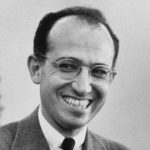 In a time of global pandemic, many people are thinking about the Coronavirus, and the impact it is having on all our lives. Of course, there have been a number of pandemics in years past, such as the Spanish Flu Pandemic of 1918, that killed 50,000,000 worldwide. The pandemic was active from January 1918 to December 1920. So little was known then about how to protect ourselves from these things, or even what a virus was. We learned from that pandemic and others as the years went on.
In a time of global pandemic, many people are thinking about the Coronavirus, and the impact it is having on all our lives. Of course, there have been a number of pandemics in years past, such as the Spanish Flu Pandemic of 1918, that killed 50,000,000 worldwide. The pandemic was active from January 1918 to December 1920. So little was known then about how to protect ourselves from these things, or even what a virus was. We learned from that pandemic and others as the years went on.
One such epidemic was the Polio Epidemic in the United States, the 1952 epidemic was the worst outbreak in the nation’s history. It is credited with heightening parents’ fears of the disease and focusing public awareness on the need for a vaccine. Of the 57,628 cases reported that year 3,145 died and 21,269 were left with mild to disabling paralysis. Finally, on March 26, 1953, American medical researcher Dr Jonas Salk announced on a national radio show that he has successfully tested a vaccine against poliomyelitis, which is the virus that causes the crippling disease of polio. Dr Salk was celebrated as the great doctor-benefactor of his time, for promising eventually to eradicate the disease, which is known as “infant paralysis” because it mainly affects children.
Polio attacks the nervous system and can cause varying degrees of paralysis. The disease affected humanity throughout recorded history, and since the virus is easily transmitted, epidemics were commonplace in the first decades of the 20th century. The summer of 1894 brought the United States first major polio epidemic, beginning in Vermont. By the 20th century thousands were affected every year. In the first decades of the 20th century, treatments were limited to quarantines and the infamous “iron lung,” a metal coffin-like contraption that aided respiration. Although children, and especially infants, were among the worst affected, adults were 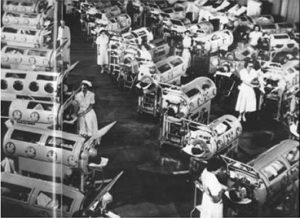 also commonly afflicted, including future president Franklin D Roosevelt, who in 1921 was stricken with polio at the age of 39 and was left partially paralyzed. Roosevelt later transformed his estate in Warm Springs, Georgia, into a recovery retreat for polio victims and was instrumental in raising funds for polio-related research and the treatment of polio patients.
also commonly afflicted, including future president Franklin D Roosevelt, who in 1921 was stricken with polio at the age of 39 and was left partially paralyzed. Roosevelt later transformed his estate in Warm Springs, Georgia, into a recovery retreat for polio victims and was instrumental in raising funds for polio-related research and the treatment of polio patients.
Salk’s procedure, first attempted unsuccessfully by American Maurice Brodie in the 1930s, was to kill several strains of the virus and then inject the benign viruses into a healthy person’s bloodstream. The person’s immune system would then create antibodies designed to resist future exposure to poliomyelitis. Salk conducted the first human trials on former polio patients, on himself, and his family. By 1953, he was ready to announce his findings. The announcement was made on March 25th, on the CBS national radio network, and two days later in an article published in the Journal of the American Medical Association. Dr Salk became an immediate celebrity.
Clinical trials using the Salk vaccine and a placebo began in 1954 on nearly two million American schoolchildren. It was announced that the vaccine was effective and safe in April 1955, and a nationwide inoculation campaign began. Unfortunately a defective vaccine manufactured at Cutter Laboratories of Berkeley, California, had tragic results in the Western and mid-Western United States, when more than 200,000 people were injected with a defective vaccine, and thousands of polio cases were reported, 200 children were left paralyzed and 10 died.
The ensuing panic delayed production of the vaccine. Still, new polio cases dropped to under 6,000 in 1957, the 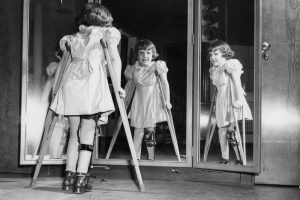 first year after the vaccine was widely available. So, other than the defective vaccine, maybe it was working. Scientists continued to improve the product, and in 1962, an oral vaccine developed by Polish-American researcher Albert Sabin became available, greatly facilitating distribution of the polio vaccine. These days, polio has been all but wiped out, and there are just a handful of polio cases in the United States every year. Most of these are “imported” by Americans from developing nations where polio is still a problem. Jonas Salk was awarded the Presidential Medal of Freedom in 1977, among other honors. He died in La Jolla, California, in 1995.
first year after the vaccine was widely available. So, other than the defective vaccine, maybe it was working. Scientists continued to improve the product, and in 1962, an oral vaccine developed by Polish-American researcher Albert Sabin became available, greatly facilitating distribution of the polio vaccine. These days, polio has been all but wiped out, and there are just a handful of polio cases in the United States every year. Most of these are “imported” by Americans from developing nations where polio is still a problem. Jonas Salk was awarded the Presidential Medal of Freedom in 1977, among other honors. He died in La Jolla, California, in 1995.
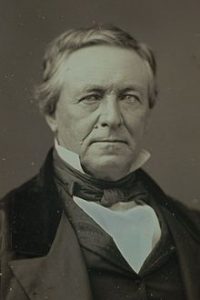 I think that many of us have thought about a hidden treasure…probably as kids, but maybe as adults too. In fact, with the number of metal detectors sold every year, maybe there are just as many adults looking for hidden treasure as kids.
I think that many of us have thought about a hidden treasure…probably as kids, but maybe as adults too. In fact, with the number of metal detectors sold every year, maybe there are just as many adults looking for hidden treasure as kids.
Dr John Marsh was born June 5, 1799 in South Danvers, Massachusetts. In college at Harvard, he had intended to study ministry, but changed his mind and received his bachelors degree in medicine. He then studied medicine with a Boston doctor. He then decided to move to California, and became an early pioneer and settle in Alta, California. He was also the first Harvard graduate, the first to practice medicine there. He knew Hebrew, Latin and Greek, and was the first to compile a dictionary of the Sioux language. He became one of the wealthiest ranchers in California, and was one of the most influential men in the establishment of California statehood.
The Reverend William W Smith introduced Marsh to Abigail “Abby” Smith Tuck, a schoolteacher from New England, who also served as principal at a girls school in San Jose. After a brief two-week courtship, they were married on June 24, 1851. Soon after the wedding, the couple moved into the old adobe. On 12 March 1852, she gave birth to a daughter they 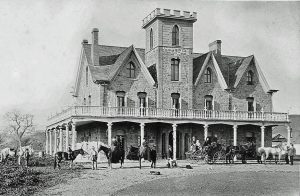 named Alice Frances. Shortly thereafter, Marsh set out to build his family a home. Abby had picked the spot for their home. The home that was nestled in the foothills of Mount Diablo. The home was located next to a creek that was later named Marsh Creek after the doctor. While the home was stunning, the cost of building it did not exceed $20,000.
named Alice Frances. Shortly thereafter, Marsh set out to build his family a home. Abby had picked the spot for their home. The home that was nestled in the foothills of Mount Diablo. The home was located next to a creek that was later named Marsh Creek after the doctor. While the home was stunning, the cost of building it did not exceed $20,000.
Marsh was not only a doctor, but also a rancher, and was very successful, even though he was usually paid for medical services in the currency of the day…cowhides and tallow. Marsh might have been a bit of an eccentric, or maybe he just didn’t trust banks. Whatever the case may be, he was known to bury his money in the foothills near his home. Abby died in 1855, and maybe that was what set Marsh to burying the money. I don’t think anyone knows. It is thought that Marsh buried about $40,000 in gold coins in the area, but the money  has never been found. On September 24, 1856, while coming home from Martinez, Marsh was murdered. It happened on the road between Pacheco and Martinez. Riding by, he was ambushed and murdered by three of his vaquero employees over a dispute about their wages. Two of the killers were found ten years later and brought to trial. One man turned state’s evidence and was released without trial. The other was convicted and sentenced to life in prison, though he was pardoned 25 years later. The third man was never caught. A California Historical Landmark #722 plaque still marks the site of the murder. John and Abigail Marsh are buried in Mountain View Cemetery, in Oakland, California.
has never been found. On September 24, 1856, while coming home from Martinez, Marsh was murdered. It happened on the road between Pacheco and Martinez. Riding by, he was ambushed and murdered by three of his vaquero employees over a dispute about their wages. Two of the killers were found ten years later and brought to trial. One man turned state’s evidence and was released without trial. The other was convicted and sentenced to life in prison, though he was pardoned 25 years later. The third man was never caught. A California Historical Landmark #722 plaque still marks the site of the murder. John and Abigail Marsh are buried in Mountain View Cemetery, in Oakland, California.

 My nephew, Weston Moore decided last year, after his high school graduation, to take some time off before going to college. He wanted to work, save up some money, and buy a different car. He also planned to save up some money for when he goes back to school. At this point, he is getting close to having enough money for the car, but as we all know, things have changed today’s world. with the Coronavirus Pandemic, people are being told to stay at home, businesses are closing down, only essential workers are allowed to go to work…all in an effort to stop the spread of this virus. That said, Weston still has a job, but not many hours.
My nephew, Weston Moore decided last year, after his high school graduation, to take some time off before going to college. He wanted to work, save up some money, and buy a different car. He also planned to save up some money for when he goes back to school. At this point, he is getting close to having enough money for the car, but as we all know, things have changed today’s world. with the Coronavirus Pandemic, people are being told to stay at home, businesses are closing down, only essential workers are allowed to go to work…all in an effort to stop the spread of this virus. That said, Weston still has a job, but not many hours.
In this time, Weston and his family are thankful that he was not away at college, especially since the colleges are mostly closed. Weston is still living at home and his family are all thankful to be together in this difficult time. Thinking back on his graduation, he and his family are glad he graduated last year, because with the pandemic, no school is assured of the ability to hold their graduation ceremonies or parties.
Many things are different now, and it is quite likely that there will be no big gathering for Weston’s birthday. Instead it will be just him, his brother, Easton; and their parents, Machelle and Steve. His mom decides to get a cake last week so she would have one, in case she couldn’t get out as the day drew closer. At this point, they 
 have been hunkering down at the house, leaving only when necessary, and concentrating on staying well. Things are always subject to change…instantly in times of a great pandemic, like we are in the midst of, but Weston always has a great attitude, and that can make his one person who will lift every one else’s spirits. That kind of person is exactly what we need in trying time, and I’m glad that the Moore family has just such a person. These are strange times. Today is Weston’s 20th birthday. Where have the years gone. Happy birthday Weston!! Have a great day!! We love you!!
have been hunkering down at the house, leaving only when necessary, and concentrating on staying well. Things are always subject to change…instantly in times of a great pandemic, like we are in the midst of, but Weston always has a great attitude, and that can make his one person who will lift every one else’s spirits. That kind of person is exactly what we need in trying time, and I’m glad that the Moore family has just such a person. These are strange times. Today is Weston’s 20th birthday. Where have the years gone. Happy birthday Weston!! Have a great day!! We love you!!
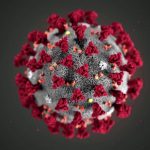
 Finding ourselves in the middle of a global pandemic has placed many Americans, and in fact, most Americans, as well as the people of other countries, in a world suddenly changed. Will it be forever changed? Well, that remains to be seen. What we do know is that life as we knew it…just days ago for some of us, is nothing like it was before. We find ourselves being told to “stay at home” unless we happen to be one of the essential workers…doctors, nurses, CNAs and other hospital workers, grocery store employees, restaurant workers (who can only handle pick-up or delivery orders, because the dining rooms are closed), first responders (police, fire, and ambulance), necessary city or town workers (including, of course, government officials), mail carriers, truck drivers and delivery people. The rest of us are supposed to stay home accept for getting food, groceries, medicine, gasoline, medical appointments, and outdoor exercise…all while practicing social distancing (staying 6 feet away from other people). That, of course, means no hugging, hand shaking, high fives, elbow bumps or even foot taps, which had prior become the new normal. Many people are wearing masks and of course, washing their hands and using hand sanitizer, and not touching their faces.
Finding ourselves in the middle of a global pandemic has placed many Americans, and in fact, most Americans, as well as the people of other countries, in a world suddenly changed. Will it be forever changed? Well, that remains to be seen. What we do know is that life as we knew it…just days ago for some of us, is nothing like it was before. We find ourselves being told to “stay at home” unless we happen to be one of the essential workers…doctors, nurses, CNAs and other hospital workers, grocery store employees, restaurant workers (who can only handle pick-up or delivery orders, because the dining rooms are closed), first responders (police, fire, and ambulance), necessary city or town workers (including, of course, government officials), mail carriers, truck drivers and delivery people. The rest of us are supposed to stay home accept for getting food, groceries, medicine, gasoline, medical appointments, and outdoor exercise…all while practicing social distancing (staying 6 feet away from other people). That, of course, means no hugging, hand shaking, high fives, elbow bumps or even foot taps, which had prior become the new normal. Many people are wearing masks and of course, washing their hands and using hand sanitizer, and not touching their faces.
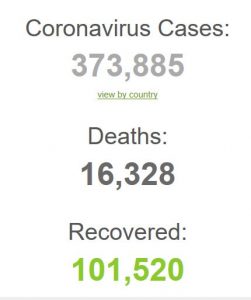
Many of these things are common sense, and some are things we have done for a while now, but other things are so new and very foreign to us. We are a mobile society, and staying home is very foreign to us. Schools and daycares are closed, making it difficult for the essential workers with children to get to work. Parents who never considered home-schooling, are forced to do so, as many schools will not open for the remainder of the school year. Non-essential workers find themselves working from home (if their jobs can feasibly allow that). The streets are almost deserted, and we find ourselves wondering if the few people we see out, have a legitimate reason to be out, or if they had simply gone rogue. Normally we care little for the goings on of other people on the street, and we are used to many people going many places. Most of us hardly notice the people around us going about their daily commutes or errands. We were too busy with our own lives to care about what others were doing. Now, however, we find ourselves looking at the people who are out and about, wondering if they really should be more responsible and stay at home.
As pandemics do, this one too shall pass, but what of our country. Will we start to be more caring for others? Will we work to get closer to our families, neighbors, and friends? Will we suddenly know that we can use a lot less of things that we may have been wasteful with before? Will we continue to pray over people and say things like “God Bless America,” or are these things just something we do because we have been caught up in the  moment? Or will we, like so many times before, forget about all this a year from now? It is my hope that we will step up and make some permanent changes in our lives. The people of the earth have maybe been very selfish, thinking only of ourselves and those we care about, but maybe we shouldn’t be that way. Life as we knew it changed with COVID19’s entrance on the world stage. What we do next will determine how history views the generations of people alive today. Will we be viewed as reckless and unfeeling, or will we be viewed as the most amazing generation ever to deal with a global disaster? The outcome really depends on us.
moment? Or will we, like so many times before, forget about all this a year from now? It is my hope that we will step up and make some permanent changes in our lives. The people of the earth have maybe been very selfish, thinking only of ourselves and those we care about, but maybe we shouldn’t be that way. Life as we knew it changed with COVID19’s entrance on the world stage. What we do next will determine how history views the generations of people alive today. Will we be viewed as reckless and unfeeling, or will we be viewed as the most amazing generation ever to deal with a global disaster? The outcome really depends on us.
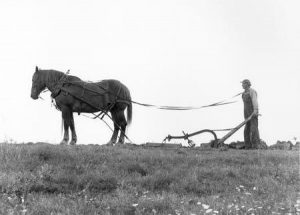 As we head into Spring, the Farmers start planning for the spring planting. In man’s early years, that meant finding a stick to poke a hole in the ground so the seeds could be placed in the hole and covered. While that may have been fine for the small one-family garden, it was ineffective for the large farms we have today. Supplying many people with food, like today’s farmers do, means that plowing and planting has to be more streamlined.
As we head into Spring, the Farmers start planning for the spring planting. In man’s early years, that meant finding a stick to poke a hole in the ground so the seeds could be placed in the hole and covered. While that may have been fine for the small one-family garden, it was ineffective for the large farms we have today. Supplying many people with food, like today’s farmers do, means that plowing and planting has to be more streamlined.
Watching shows like Little House on the Prairie, and others that took in a planting period, most of us have seen the hand plow used by farmers in the Old West. It was hooked up to a horse, and the farmer had to not only follow 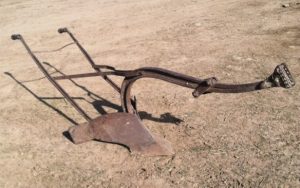 behind the horse, being careful to keep up, but also to force the blade of the plow into the dirt to turn it over. The plow worked, but it was very labor intensive…and in the heat of the day, a man could get heat stroke plowing his field…literally!!
behind the horse, being careful to keep up, but also to force the blade of the plow into the dirt to turn it over. The plow worked, but it was very labor intensive…and in the heat of the day, a man could get heat stroke plowing his field…literally!!
The wheeled plow, which was drawn by oxen at first, but later by horses, made possible the northward spread of European agriculture. Finally, the farmer could sit and let the horse and machine do the work. It was still hot in the mid-day sun, but the work wasn’t so labor intensive. The 18th-century addition of the moldboard, which turned the furrow slice cut by the  plowshare, was an important advance. The black hard-packed soil in the American Midwest in the mid-19th century challenged the strength of the existing plow. That was when American mechanic John Deere invented the all-steel one-piece share and moldboard. The three-wheel sulky plow followed and finally, with the introduction of the gasoline engine the tractor-drawn plow. Further improvements followed until we had the advanced farming equipment we have today. The plow has come a long way, and the work of a farmer has become a little easier, but it is still hard work, and without the farmers we would have serious food shortages. Thank you to all our farmers!! Don’t forget to thank a farmer today.
plowshare, was an important advance. The black hard-packed soil in the American Midwest in the mid-19th century challenged the strength of the existing plow. That was when American mechanic John Deere invented the all-steel one-piece share and moldboard. The three-wheel sulky plow followed and finally, with the introduction of the gasoline engine the tractor-drawn plow. Further improvements followed until we had the advanced farming equipment we have today. The plow has come a long way, and the work of a farmer has become a little easier, but it is still hard work, and without the farmers we would have serious food shortages. Thank you to all our farmers!! Don’t forget to thank a farmer today.
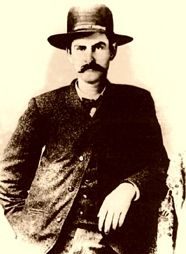 He came from a family of seafaring lawmen in Massachusetts, and a long line of English sailors of the Seven Seas. Nevertheless, David Allen Mather was known as Mysterious Dave, because people weren’t sure if he was a lawman or a killer. Mather was born on August 10, 1851, to Ulysses and Lycia Mather. Mysterious Dave could often be found wearing royal blue and red, as a proud display of his English heritage…even as he got older. Because some of his family members were lawmen in Massachusetts, Mysterious Dave decided that he wanted to become a lawman himself, but he was a small man with square but weak shoulders, dark eyes, and a mustache. Mather was not a talkative man, earning him the nickname of “Mysterious Dave.”
He came from a family of seafaring lawmen in Massachusetts, and a long line of English sailors of the Seven Seas. Nevertheless, David Allen Mather was known as Mysterious Dave, because people weren’t sure if he was a lawman or a killer. Mather was born on August 10, 1851, to Ulysses and Lycia Mather. Mysterious Dave could often be found wearing royal blue and red, as a proud display of his English heritage…even as he got older. Because some of his family members were lawmen in Massachusetts, Mysterious Dave decided that he wanted to become a lawman himself, but he was a small man with square but weak shoulders, dark eyes, and a mustache. Mather was not a talkative man, earning him the nickname of “Mysterious Dave.”
While Mather wanted to be a lawman, he wasn’t always true to his chosen profession. Like so many other lawmen of the Old West, sometimes necessity caused him to operate on both sides of the fence. Sometimes he was on the side of the law, and other times he could be found riding with outlaws. It didn’t instill much confidence in the law. The townspeople might find themselves with out protection, because the local sheriff is part of the gang that is robbing the local bank.
Mather’s parents died before he was 16, so he and his brother, Josiah headed west. By 1873, Mather was cattle rustling in Sharp County, Arkansas. A year later, Mather discovered Dodge City, Kansas, a town he would return to frequently…both as a lawman and an outlaw. He also loved to head into Denver, Colorado, always with twin Colts bulging under his coat, to frequent the saloons there. He was interested in watching the gamblers at the faro, blackjack, and poker tables, but strangely, he never gambled himself.
Mather had made his way to Mobeetie, Texas by 1878, and began hanging out with Wyatt Earp. Before long a suspicious story emerged placing the two men running a con game peddling “gold” bricks to the naïve citizens of Mobeetie. Mather hooked up with outlaw Dutch Henry Born in 1879. Born was the leader of a horse-stealing ring operating in a huge area from Kansas, to eastern Colorado and New Mexico, and the Texas Panhandle. Before long Mather was arrested with Henry Born, but was later released…somehow beating the rap. Next, Mather was picked up for complicity in a train robbery near Las Vegas, New Mexico, but somehow dodged a bullet there too, when he was acquitted. Somehow the people of Las Vegas decided that Mather would make a great Deputy Marshal. Apparently he had mixed emotions on that score, because soon, he became part of the notorious Dodge City Gang that was terrorizing the city of Las Vegas New Mexico. What??? I thought he was supposed to be protecting them!!
On January 22, 1880, T.J. House, James West, John Dorsey, and William Randall terrorizing the town, laughing and looking for trouble. When they entered the Close and Patterson Variety Hall, Marshal Joe Carson asked them to check their guns but they refused. In the ensuing gunfight, Carson was killed immediately, while Deputy “Mysterious” Dave Mather killed Randall and dropped West. John Dorsey, though wounded, and T.J. House managed to escape. The whereabouts of Dorsey and House was learned on February 5. They were at the home of Juan Antonio Dominguez in Buena Vista, thirty miles north of Las Vegas. They formed a posse including J.J. Webb, Dave Rudabaugh, and five other men. They surrounded the home and told the men to surrender. Dorsey and House complied after assurance of protection from the citizens of Las Vegas were given. The assurance wouldn’t mean much, because within hours of the men being placed in the Old Town Jail, local vigilantes charged the jailers, taking the men to the windmill on the Plaza, where they were to be hanged. Mrs Carson opened fire on the men, and the opportunity was lost.
After Marshal Carson’s death, the people decided to appoint Mather as the Las Vegas Marshal, but he couldn’t keep to one side of the law, and soon moved on again after being accused of “promiscuous shooting” in his capacity as marshal. He served a short stint as Assistant Marshal in El Paso, Texas, but an altercation in a brothel caused Mather to be slightly wounded. He decided to return to Dodge City where he was hired as Assistant City Marshal.
By the time Mather returned to Dodge City, gambling, drinking, prostitution, and dance halls, often in open violation of the law, had all but taken over the town. The “Dodge City War” in the spring of 1883 was followed by pressure from the Santa Fe Railroad to clean up the town. David Mather was still at odds with the good people, but accepted the position of Dodge City Assistant Marshal. Before long, he was also the co-owner of the Opera House Saloon on Front Street.
Then a man named Thomas Nixon enter the picture. The city council objected to Mather’s decision to turn the Opera House Saloon into a dance hall and soon passed an ordinance banning all dance houses, mostly because of its prominent downtown location. Still, the council took no action whatsoever against another dance hall owned by Nixon, allegedly because of its remote location. This didn’t set well with Mather, and for several months, he and Nixon battled to put each other out of business. In 1884, the city government replaced Mysterious Dave with Nixon as the Assistant Marshal. With this action, the fight was on. The evening of July 18, 1884 found Nixon firing a gun at Mather, but only sprayed him with a few splinters. Three days later, Mather approached Nixon from behind and fired four bullets into his back, killing him instantly. Mather was later heard to say, “I ought to have killed him six months ago.”
Mather was acquitted of Nixon’s murder, but he killed another man the following year, and was run out of town by Marshal Bill Tilghman. After serving as city marshal in a couple of small towns in Kansas and Nebraska, Mysterious Dave moved on San Francisco, where he took a ship to Vancouver. Some reports say he soon enlisted in the Royal Canadian Mounted Police, proving his prowess by showing what he could do with a pair of six guns and a horse. Little is known about what happened to Mysterious Dave after that. I guess he, like old soldiers, old lawmen, they simply fade away.
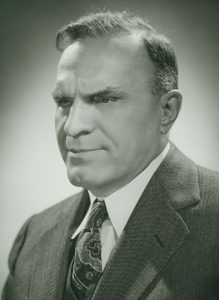 They say that “necessity is the mother of invention,” and never was that more true than for Ralph Teetor. The circumstances of his invention were of overwhelming necessity…to say the least. Teetor was blind, and because of that, he was forced to accept rides to wherever he chose to go. His friend, Harry Lindsay, who didn’t mind driving Teetor around, but who also had a notoriously “jerky accelerator foot.” Teetor couldn’t figure out why, Lindsay couldn’t keep the car at a consistent speed. When you think about it, a car that is being driven in a jerky manner would be a bit scary for a blind passenger, who has no idea why they might be possible stopping suddenly… or even if it just seems like they are stopping suddenly.
They say that “necessity is the mother of invention,” and never was that more true than for Ralph Teetor. The circumstances of his invention were of overwhelming necessity…to say the least. Teetor was blind, and because of that, he was forced to accept rides to wherever he chose to go. His friend, Harry Lindsay, who didn’t mind driving Teetor around, but who also had a notoriously “jerky accelerator foot.” Teetor couldn’t figure out why, Lindsay couldn’t keep the car at a consistent speed. When you think about it, a car that is being driven in a jerky manner would be a bit scary for a blind passenger, who has no idea why they might be possible stopping suddenly… or even if it just seems like they are stopping suddenly.
For Teetor, the possibility of things changing was impossible. He was not going to magically get his sight back, so something else had to change. Teetor was no stranger to the idea of inventing things. At the age of five, he endured a terrible accident, which 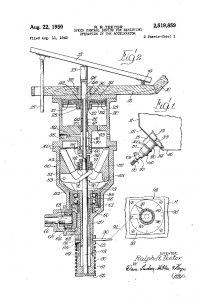 left him in his disabled condition. He was incredibly young age, but Teetor refused to allow an accident to keep him from living a full life. At age 12, he was featured in the December 21, 1902 edition of the New York Herald for building a one-cylinder car to scoot around in his neighborhood. Here is how the Herald described him in 1902: “A constructor of miniature dynamos and other machinery at 10 and thoroughly versed in all that pertains to their operation, and at 12 the builder of an automobile that carries him about the streets of his native town and far out upon the country roads at a speed of from 18 to 25 miles an hour, is the remarkable record of Ralph Teetor of Hagerstown, Indiana.”
left him in his disabled condition. He was incredibly young age, but Teetor refused to allow an accident to keep him from living a full life. At age 12, he was featured in the December 21, 1902 edition of the New York Herald for building a one-cylinder car to scoot around in his neighborhood. Here is how the Herald described him in 1902: “A constructor of miniature dynamos and other machinery at 10 and thoroughly versed in all that pertains to their operation, and at 12 the builder of an automobile that carries him about the streets of his native town and far out upon the country roads at a speed of from 18 to 25 miles an hour, is the remarkable record of Ralph Teetor of Hagerstown, Indiana.”
Teetor set out to solve his problem. He invented what we know today as the automobile cruise control system, which is an outer control loop that “takes over” control of the throttle…a task normally exercised by the driver through the accelerator pedal. Unlike the driver of the vehicle, the cruise control holds the vehicle speed steady at a set value. The invention worked perfectly on the first try, but being a perfectionist, Teetor spent the next decade tinkering with his design. By 1958, he had finally perfected his invention. Nevertheless, Cadillac began 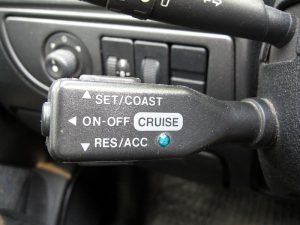 rolling it out in all of their cars by 1950. The only part of his invention that Teetor ever struggled with was the name. At first, the invention was known by “a host of names more suited for the Wiley Coyote: Speedostat, Touchomatic, and Auto-pilot.” Eventually, the designers at Chrysler came up with “cruise control.” It wasn’t flashy, but it was also less likely to be mistaken for “a kitchen appliance.” Teetor decided that sacrifices just had to be made sometimes. So now you know that the cruise control…the gas-conserving savior of long-distance drivers everywhere, actually came from one man’s pet peeve. I would imagine that if you were blind, and being thrown around in your seat because you couldn’t drive yourself, you might be pretty grouchy, too.
rolling it out in all of their cars by 1950. The only part of his invention that Teetor ever struggled with was the name. At first, the invention was known by “a host of names more suited for the Wiley Coyote: Speedostat, Touchomatic, and Auto-pilot.” Eventually, the designers at Chrysler came up with “cruise control.” It wasn’t flashy, but it was also less likely to be mistaken for “a kitchen appliance.” Teetor decided that sacrifices just had to be made sometimes. So now you know that the cruise control…the gas-conserving savior of long-distance drivers everywhere, actually came from one man’s pet peeve. I would imagine that if you were blind, and being thrown around in your seat because you couldn’t drive yourself, you might be pretty grouchy, too.
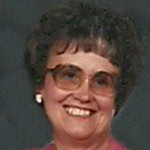
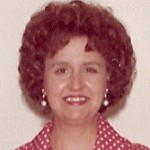 My aunt, Bonnie McDaniels often reminds me of my mom, Collene Spencer, who is her older sister. I don’t think it was as noticeable when they were younger girls, but later it became very obvious to me, and to many other people in the family. Aunt Bonnie and her siblings have long been close, but these days, their numbers are getting smaller, as more and more of them go home to Heaven. Aunt Bonnie’s husband, Uncle Jack among them. That has been hard on all of us, but especially Aunt Bonnie, who lost the love of her life when he went home. Still, her family is very close, and they are making sure that she has what she needs, and the she is not lonely.
My aunt, Bonnie McDaniels often reminds me of my mom, Collene Spencer, who is her older sister. I don’t think it was as noticeable when they were younger girls, but later it became very obvious to me, and to many other people in the family. Aunt Bonnie and her siblings have long been close, but these days, their numbers are getting smaller, as more and more of them go home to Heaven. Aunt Bonnie’s husband, Uncle Jack among them. That has been hard on all of us, but especially Aunt Bonnie, who lost the love of her life when he went home. Still, her family is very close, and they are making sure that she has what she needs, and the she is not lonely.
Aunt Bonnie has always been a very hands on mom, grandma, and great grandma, and that has not stopped. Just the other day, my husband, Bob and I ran into Aunt Bonnie with her grandson, Peter, and his daughter at the mall. The smile on Aunt Bonnie’s told me that she was, as always, very excited and happy to be included in her grandchildren’s family. I’m not sure where they were headed in the mall, but due to her great granddaughter’s influence, I’m sure they were planning on some fun activities.
 Aunt Bonnie and I have that “hands-on” grandparenting style in common. We wanted nothing more than to spend lots of time with our grandchildren. It is our opinion that kids need their grandparents as much as grandparents need their grandkids, and I know that many grandparents share that view. Aunt Bonnie has the added fun item for kids, of living out in the country. Her place is beautiful, and all of the family members who have been there, would agree. It’s like going out to a park along the river. Summertime at her house is beautiful. I’m so happy that she has such a beautiful sanctuary. I’m sure it is a very relaxing place to be. Today is Aunt Bonnie’s 80th birthday. Happy birthday Aunt Bonnie!! Have a great day!! We love you!!
Aunt Bonnie and I have that “hands-on” grandparenting style in common. We wanted nothing more than to spend lots of time with our grandchildren. It is our opinion that kids need their grandparents as much as grandparents need their grandkids, and I know that many grandparents share that view. Aunt Bonnie has the added fun item for kids, of living out in the country. Her place is beautiful, and all of the family members who have been there, would agree. It’s like going out to a park along the river. Summertime at her house is beautiful. I’m so happy that she has such a beautiful sanctuary. I’m sure it is a very relaxing place to be. Today is Aunt Bonnie’s 80th birthday. Happy birthday Aunt Bonnie!! Have a great day!! We love you!!
 Imagine an airplane simply disappearing…without a trace. These days, that scenario seems both far fetched, and yet not so far fetched. After Malaysia Flight 370 went missing and wasn’t found for a long time, the people began to wonder if it had been hijacked and taken to a communist country. Many people are still skeptical concerning the wreckage that was located. Nevertheless, Malaysia Flight 370 was not the first flight to go missing, many planes have gone missing, some never to be seen again. The big shock with the Malaysia flight was that there were so many locators on these planes. We couldn’t figure out how this could happen with so many gadgets to find missing planes.
Imagine an airplane simply disappearing…without a trace. These days, that scenario seems both far fetched, and yet not so far fetched. After Malaysia Flight 370 went missing and wasn’t found for a long time, the people began to wonder if it had been hijacked and taken to a communist country. Many people are still skeptical concerning the wreckage that was located. Nevertheless, Malaysia Flight 370 was not the first flight to go missing, many planes have gone missing, some never to be seen again. The big shock with the Malaysia flight was that there were so many locators on these planes. We couldn’t figure out how this could happen with so many gadgets to find missing planes.
In years gone by, flight locating equipment was not as readily available. For that reason, planes disappearing was more common. On March 16, 1962, one of the strangest disappearances of modern times occurred. Flying Tiger Line Flight 739 still remains a mystery. It is the worst aviation accident in the Lockheed Constellation series. The strange thing was that there was no reported accident involving the flight, and yet the general belief is the plane was involved in an in-flight explosion. This information came from a potential witness on a civilian tanker. Nevertheless, no wreckage, debris, or bodies were ever found, although the search and rescue efforts of the US military were extensive. The frustration must have massive. Looking…but finding no signs of wreckage.
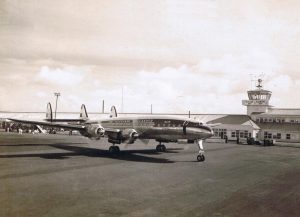 The biggest reason that the lost flight still remains a mystery, is that without wreckage, there was no way to determine probable cause of the accident. The explosion remains the best cause, but there is a conspiracy theory which insists that sabotage could have been in play. Flight 739, an L-1049 Super Constellation, took off from the Travis Air Force Base on the March 16th and went missing in the area of the Aleutian Islands. The Civil Aeronautics Board determined that, based on the tanker’s observations, Flight 739 probably exploded in-flight, though an exact cause could not be determined without examining the remnants of the aircraft. As of this date, flight 739 remains the worst aviation accident involving the Lockheed Constellation series.
The biggest reason that the lost flight still remains a mystery, is that without wreckage, there was no way to determine probable cause of the accident. The explosion remains the best cause, but there is a conspiracy theory which insists that sabotage could have been in play. Flight 739, an L-1049 Super Constellation, took off from the Travis Air Force Base on the March 16th and went missing in the area of the Aleutian Islands. The Civil Aeronautics Board determined that, based on the tanker’s observations, Flight 739 probably exploded in-flight, though an exact cause could not be determined without examining the remnants of the aircraft. As of this date, flight 739 remains the worst aviation accident involving the Lockheed Constellation series.

